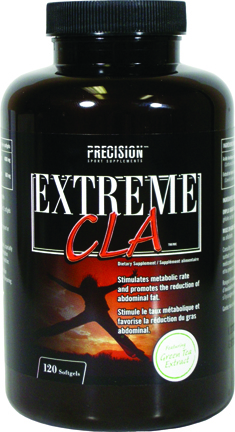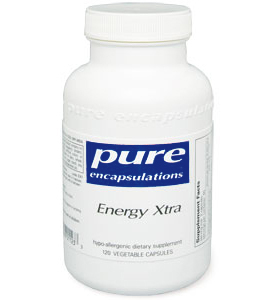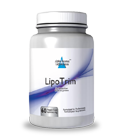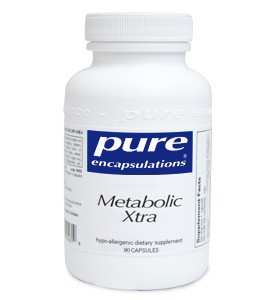Natural Supplements for Weight Loss | How to Lose Weight Naturally?

How to lose weight successfully and maintain it

Reports indicate that Americans are consuming extra 331 calories per day in comparison to what they were consuming back in 1978. This amount is adding up to 120,000 extra calories per year which stores as about 34 pounds of mainly body fat.
Being overweight increases the risk of many diseases including Cardiovascular disease, Hypertension, Digestive disorders, Acid reflux, Arthritis, Chronic Inflammation, and Malignancies. It is also affecting the sleep ,and limiting mobility.
Having said that, based on multiple scientific studies only simplistic approach of eating less is not providing successful weight loss. Besides limiting calorie intake, there are other important factors that should be considered in a successful weight loss protocol.
Some of these factors are including: Restoring healthy hormonal balance, insulin sensitivities, and serotonin levels. Increasing physical activity and restful sleep. Limiting the absorption of fat and sugar. Choosing healthy foods and eliminating processed food.
Our body regulates its weight via a very complex network of nervous system and hormones. The hypothalamus region of the brain regulates the nerve signals received from the sensory cells in the stomach. When the stomach is stretched or full, these cells will send the satiety signal directly to the brain. Also indirectly the insulin level and the secretion of some other digestive enzymes are sending satiety signals.
Fat cells based on their fat reserves produce a hormone called Leptin. When the fat reserves are going down for instance during a diet, Leptin levels are low and that signals the brain to stimulate hunger. While, when the Leptin is at its higher levels, it sends the satiety signal to brain. In Overweight people the brain does not respond to the high levels of leptin anymore this is called the Leptin resistance mode. This is exactly like Insulin resistance and diabetes type 2 . No matter how much Leptin the fat cells produce, the brain does not recognize it, so for a Leptin resistance brain it is like there is no Leptin resulting in constant feeling of hunger.
Body burns calories while resting. In a Leptin Resistance situation the calorie burning rate during rest is decreased making it even harder to lose weight. This is also seen in age related weight gain.
Insulin resistance is another factor in obesity. Insulin is secreted at the presence of high levels of blood sugar and triggers the cells to take up the sugar from blood. Insulin resistance is a condition when the Insulin levels are constantly high and cells do not get the signal any more. This is more evident in obese patients as well as in cases with chronic inflammation when their cells lose their sensitivity to the Insulin. Improving insulin sensitivity is one of the important factors to a successful weight loss program.
Insufficiency in thyroid hormones, reduced male and female hormones specially due to aging and low levels of DHEA production are related to weight gain. In men low levels of testosterone causes an increase in fat mass. In addition, in overweight men more testosterone converts to estrogen via increased activity of the Aromatase enzyme produced in fat tissue. Inhibiting Aromatase and exercise are considered to provide a great help. In women, declining estrogen levels mainly during menopause could be one of the reasons of increased abdominal fat.
Thyroid gland plays a very important role in balancing our metabolism and a big number of the overweight patients show imbalanced levels of thyroid related hormones in their tests. Weigh loss is almost impossible when the thyroid hormones are insufficient.
Low levels of Serotonin which is dominantly associated with depression, is also liked to weight gain. When the Serotonin levels in the brain increases, the desire to eat decreases. Studies also found that levels of the amino acid Tryptophan which is a precursor to serotonin is considerably lower in obese individuals.
Chronic stress or long term stress alters the hormonal balance and causes weight gain and other metabolic diseases like diabetes and cardiovascular disease. During stress body increases the production of a hormone called Cortisol. Cortisol promotes weight gain is multiple ways. Fat cells are covered with many receptors for cortisol, when cortisol level rises fat cells respond to it and start storing fat more and more, so the fatty tissues get bigger and bigger. Plus cortisol is able to suppress the activity of Leptin (Leptin is responsible for satiety signal to the brain).
Body Mass Index (BMI) is the most widely used way of assessing body weight. WHO defines that individuals with BMI of equal or greater than 25 are considered overweight. However, high BMI is not necessarily reflective of high body fat. Many athletes have high BMI due to higher muscle mass. Studies suggest that when BMI measurements complemented with hormonal tests including Leptin levels, it will more likely help to determine body fat content and the risks of developing obesity. For example, an athletes with a high BMI but normal levels of Leptin will less likely develop obesity.
While the very necessary step in every weight loss program is balancing calorie intake and increasing physical activity, it does not provide a sustainable and successful weight loss without including other hormonal and metabolic factors.
 Knowing that the overall food consumption during past several
decades has increased, calorie reduction shows to be beneficial to prevent many
diseases even in a healthy non obese individuals. However, choosing healthy
food substitutes including necessary nutrients and complementing a weight loss
diets with supplementing essential nutrients is not only an important key to a
healthy weight management program, but also does prevent unwanted effects of a
broken diet.
Knowing that the overall food consumption during past several
decades has increased, calorie reduction shows to be beneficial to prevent many
diseases even in a healthy non obese individuals. However, choosing healthy
food substitutes including necessary nutrients and complementing a weight loss
diets with supplementing essential nutrients is not only an important key to a
healthy weight management program, but also does prevent unwanted effects of a
broken diet.
Protein is considered one of the satiating nutrients, however all the proteins will not act equally in this regard. Researches indicate that Whey protein in particular provides superior benefits over the other sources of proteins. After taking whey protein the concentration of amino acids in the blood increases about 30 % within three hours period; and at the same time, it causes an increase of 60% in the levels of two satiety hormones . Scientists suggest that the whey protein is a better choice for improving body muscle mass and reducing body fat. Interestingly maintaining fat burn and gaining muscle mass is only achieved by taking whey protein, while whole milk actually increased body fat. Whey protein also supports weight loss and mood by its effects on serotonin levels. Alpha Lactalbamin part of the whey is rich in Amino Acid Tryptophan used in synthesis of serotonin.
Amino Acid Tryptophan is precursor to Serotonin. Serotonin levels play an important role in balancing mood and signaling satiety to brain. Tryptophan deficient diet affects Serotonin synthesis. Lower levels of Serotonin causes increase in hunger and fail to maintain successful weight loss. Studies show that taking amino acid Tryptopahn before meal reduces calorie consumption.

In several studies supplementing or consuming Green tea has shown to be moderately beneficial for weight loss. Green tea polyphenols and caffeine content will increase body's energy consumption which means it helps to turn more calories to energy. In addition, the green tea's antioxidant EGCG (epigallocathechin gallate) reduces the absorption of fat from the digestive tract. Human trial on moderately obese individuals showed supplementing with EGCG for three months reduced their body weight by almost 5%.
In several double blind studies individuals who were supplementing with CLA for three months, showed reduction in their body fat. The studies indicate that CLA promotes reduction in body fat composition via its effects on Leptin levels, while it does not necessarily promote weight loss. Some other research suggested that the Isomer t10c12 to be more beneficial form of CLA in fat loss. Taking CLA for a long time has not shown any adverse effects on the liver function, and did not show any effects on blood lipids, cholesterol and glucose levels.
Brown seaweed extract called Fucoxanthin is able to increase body's metabolism or energy consumption by its affects on mitochondria (an organelle inside our cells which is responsible to produce energy). Four months human trial combining calorie restricted diet with supplementing Fucoxanthin and pomegranate seed extract together, resulted in a significant weight loss as well as reduction in their inflammatory marker (CRP), serum lipids including triglycerides and LDL compared to the control group.
Poly phenol extracts from seaweeds like Kelp, Bladder wrack and brown seaweed when taken before meal, has shown to decrease the carbohydrate or sugar absorption from the meal by affecting the activity of a gastric enzyme called alpha amylase. In addition, research suggests seaweed poly phenols reduce the blood Insulin level and increase Insulin sensitivity of the cells.
Irvingia gabonesis seed extract improves Leptin sensitivity. Studies show that taking adequate amount of Irvingia before meals helps to reduce body fat, as well as blood lipids and sugar.
Another effective natural supplement which is able to both reduce the absorption of carbohydrate and balance the insulin levels is Mulberry leaf Extract . Mulberry Leaf extract reduces the excessive glucose production in the liver as well. Several studies compared the function of mulberry leaf extract with drugs used in treating diabetes and all of them concluded that mulberry leaf extract is as effective as those drugs without the unwanted side effects. However, the benefits of mulberry leaf extract was not limited to improving blood sugar levels and insulin sensitivity, it also helped to balance blood lipids by lowering cholesterol, LDL, and triglycerides within 4 to 8 weeks. Therefore supplementing with mulberry leaf extract helps with weight loss by having beneficial effects on blood sugar and lipids.
Plant fibres such as Arabinose and Glucomannan are able to reduce absorption of dietary carbohydrate and fat in the digestive tract. Many studies support their safety of use and their positive effects on weight loss via appetite reduction, blood glucose balance as well as blood lipid reduction.
Improving Insulin sensitivity and keeping the blood sugar at normal level are the important components to a successful weight management and weight loss program. Based on several researches trace minerals like Chromium and Vanadium can enhance the insulin activity and perform a positive a effect on improving metabolic syndrome conditions. Inadequate amount of in another essential mineral called Magnesium in our diets is also linked to increased risk of developing diabetes, metabolic syndrome, and other obesity related diseases.
Addressing the major causes of slow metabolism and weight gain, helps to lose those extra pounds much easier and more effectively. Identifying each cause will help to reverse associated diseases with weight gain and reduce the risks of developing metabolic syndrome, diabetes, chronic inflammation, and many more. Those causes are managed by controlling appetite and hunger hormones, Reducing calorie consumption, Increasing physical activities, Reducing stress considering serotonin and tryptophan levels, Reducing inflammation, Limiting exposure and consumption of preservatives and additives which contribute to slower metabolism and increase in fat storage, Optimizing body's detoxification by Including antioxidants in our daily diet like green tea and raw cocoa, Boosting energy production from calories, Keeping hormones in balance and Knowing levels of thyroid, adrenal, male and female hormones .
Articles and products featured by Health Palace are collected from a variety of sources and are provided as a service by Health Palace. These newsletters, while of potential interest to readers, do not necessarily represent the opinions nor constitute the advice of Health Palace. Presented materials are only for information purposes and do not intent to treat, cure, or prevent any disease.
References:
- Hall WL, Millward DJ, Long SJ, Morgan LM. Casein and whey
exert different effects on plasma amino acid profiles, gastrointestinal hormone
secretion and appetite. Br Nutr. 2003 Feb;89(2):239-48.
- Belobrajdic DP, McIntosh GH, Owens JA. A high-whey-protein
diet reduces body weight gain and alters insulin sensitivity relative to red
meat in wistar rats. J Nutr. 2004 Jun;134(6):1454-8.
- Markus CR,
Olivier B, Panhuysen GE, et al.
The bovine protein alpha-lactalbumin increases the plasma
ratio of tryptophan to the other large neutral amino acids, and in vulnerable
subjects raises brain serotonin activity, reduces cortisol concentration, and
improves mood under stress. Am J Clin Nutr. 2000 Jun;71(6):1536-44.
- 10. Belury MA, Mahon A, Banni S. The conjugated linoleic acid (CLA) isomer, t10c12-CLA, is inversely associated with changes in body weight and serum leptin in subjects with type 2 diabetes mellitus. J Nutr. 2003 Jan;133(1):257S-60S.
- 19. Blankson H, Stakkestad JA, Fagertun H, et al. Conjugated linoleic acid reduces body fat mass in overweight and obese humans. J Nutr. 2000 Dec;130(12):2943-8.
- 21. Whigham LD, O’Shea M, Mohede IC, Walaski HP, Atkinson RL. Safety profile of conjugated linoleic acid in a 12-month trial in obese humans. Food Chem Toxicol. 2004 Oct;42(10):1701-9.
- Barrett, M. L., and Udani, J. K. A proprietary alpha-amylase inhibitor from white bean (Phaseolus vulgaris): a review of clinical studies on weight loss and glycemic control. Nutr J. 2011;10:24
- Bastard, J.-P., Maachi, M., Lagathu, C., et al. Recent advances in the relationship between obesity, inflammation, and insulin resistance. Eur. Cytokine Netw. 2006;17(1):4–12
- Björntorp, P. Do stress reactions cause abdominal obesity and comorbidities? Obes Rev. 2001;2(2):73–86
- Wolfe, B. E., Metzger, E. D., and Stollar, C. The effects of dieting on plasma tryptophan concentration and food intake in healthy women. Physiol Behav. 1997;61(4):537–41
- De Vriendt, T., Moreno, L. A., and De Henauw, S. Chronic stress and obesity in adolescents: scientific evidence and methodological issues for epidemiological research. Nutr Metab Cardiovasc Dis. 2009;19(7):511–9
- Hursel, R., Viechtbauer, W., and Westerterp-Plantenga, M. S. The effects of green tea on weight loss and weight maintenance: a meta-analysis. Int J Obes (Lond). 2009;33(9):956–61
- Bose M, Lambert JD, Ju J, Reuhl KR, Shapses SA, Yang CS. The major green tea polyphenol, (-)-epigallocatechin-3-gallate, inhibits obesity, metabolic syndrome, and fatty liver disease in high-fat-fed mice. The Journal of nutrition. Sep 2008;138(9):1677-1683.
- Chen YK, Cheung C, Reuhl KR, Liu AB, Lee MJ, Lu YP, Yang CS. Effects of green tea polyphenol (-)-epigallocatechin-3-gallate on newly developed high-fat/Western-style diet-induced obesity and metabolic syndrome in mice. Journal of agricultural and food chemistry. Nov 9 2011;59(21):11862-11871.
- Cavaliere, H., and Medeiros-Neto, G. The anorectic effect of increasing doses of L-tryptophan in obese patients. Eat Weight Disord. 1997 Dec;2(4):211-5.
- Breum L, Rasmussen MH, Hilsted J, Fernstrom JD. Twenty-four-hour plasma tryptophan concentrations and ratios are below normal in obese subjects and are not normalized by substantial weight reduction. The American journal of clinical nutrition. May 2003;77(5):1112-1118.
- Calton, J. B. Prevalence of micronutrient deficiency in popular diet plans. J Int Soc Sports Nutr. 2010;7:24
- Knutson KL, Spiegel K, Penev P, Van Cauter E. The metabolic consequences of sleep deprivation. Sleep medicine reviews. Jun 2007;11(3):163-178.
- Lam, D. D., Garfield, A. S., Marston, O. J., Shaw, J., and Heisler, L. K. Brain serotonin system in the coordination of food intake and body weight. Pharmacology, Biochemistry and Behavior. 2010;97(1):84–91
- Chen, K., Li, F., Li, J., et al. Induction of leptin resistance through direct interaction of C-reactive protein with leptin. Nat. Med. 2006;12(4):425–32
- Myers MG Jr, Leibel RL, Seeley RJ, et al. Obesity and leptin resistance: distinguishing cause from effect. Trends Endocrinol Metab. 2010;21(11):643-51.
- Doi K, Nakamura T, Aoyama N, Matsurura M, Kawara A, Baba S. Metabolic and nutritional effects of long-term use of glucomannan in the treatment of obesity. In: Oomura Y, ed. Progress in Obesity Research. John Libbey & Company, Ltd., 1990:507-14.
- Doi, K. Effect of konjac fibre (glucomannan) on glucose and lipids. Eur J Clin Nutr. 1995;49 Suppl 3:S190–7
- Osaki S, Kimura T, Sugimoto T, Hizukuri S, Iritani N. L-arabinose feeding prevents increases due to dietary sucrose in lipogenic enzymes and triacylglycerol levels in rats. J Nutr. 2001 Mar;131(3):796-9.
- Sood, N., Baker, W. L., and Coleman, C. I. Effect of glucomannan on plasma lipid and glucose concentrations, body weight, and blood pressure: systematic review and meta-analysis. American Journal of Clinical Nutrition. 2008;88(4):1167–75
- Fontana, L., Klein, S., Holloszy, J. O., and Premachandra, B. N. Effect of long-term calorie restriction with adequate protein and micronutrients on thyroid hormones. J Clin Endocrinol Metab. 2006;91(8):3232–5
- Giles ED, Wellberg EA, Astling DP, Anderson SM, Thor AD, Jindal S, . . . Maclean PS. Obesity and overfeeding affecting both tumor and systemic metabolism activates the progesterone receptor to contribute to postmenopausal breast cancer. Cancer research. Dec 15 2012;72(24):6490-6501.
- Hagobian, T. A., and Braun, B. Physical activity and hormonal regulation of appetite: sex differences and weight control. Exerc Sport Sci Rev. 2010;38(1):25–30
- Jéquier E. Pathways to obesity. Int. J. Obes. Relat. Metab. Disord. 2002;26 Suppl 2:S12–7
- Maarbjerg, S. J., Sylow, L., and Richter, E. A. Current understanding of increased insulin sensitivity after exercise - emerging candidates. Acta Physiol (Oxf). 2011;202(3):323–35
- Maeda, H., Hosokawa, M., Sashima, T., Funayama, K., and Miyashita, K. Fucoxanthin from edible seaweed, Undaria pinnatifida, shows antiobesity effect through UCP1 expression in white adipose tissues. Biochem Biophys Res Commun. 2005;332(2):6–6
- Paradis, M.-E., Couture, P., and Lamarche, B. A randomised crossover placebo-controlled trial investigating the effect of brown seaweed (Ascophyllum nodosum and Fucus vesiculosus) on postchallenge plasma glucose and insulin levels in men and women. Appl Physiol Nutr Metab. 2011;36(6):913–9
- Ngondi JL, Etoundi BC, Nyangono CB, Mbofung CM, Oben JE. IGOB131, a novel seed extract of the West African plant Irvingia gabonensis, significantly reduces body weight and improves metabolic parameters in overweight humans in a randomized double-blind placebo controlled investigation. Lipids in health and disease. 2009;8:7.
- Ngondi, J. L., Oben, J. E., and Minka, S. R. The effect of Irvingia gabonensis seeds on body weight and blood lipids of obese subjects in Cameroon. Lipids Health Dis. 2005;4:12
- Nielsen, S. J., and Popkin, B. M. Patterns and trends in food portion sizes, 1977-1998. JAMA. 2003;289(4):450–3
- Prentice, A. M., and Jebb, S. A. Beyond body mass index. Obes Rev. 2001;2(3):141–7
- Vincent, H. K., Vincent, K. R., and Lamb, K. M. Obesity and mobility disability in the older adult. Obes Rev. 2010;11(8):568–79
- Williams, G. Aromatase up-regulation, insulin and raised intracellular oestrogens in men, induce adiposity, metabolic syndrome and prostate disease, via aberrant ER-α and GPER signalling. Mol Cell Endocrinol. 2012;351(2):269–78
- Bray GA, Nielsen SJ, Popkin BM. Consumption of
high-fructose corn syrup in beverages may play a role in the epidemic of
obesity.
Am J Clin Nutr.2004 Apr;79(4):537-43.
- Naowaboot J, Pannangpetch P, Kukongviriyapan V, Prawan
A, Kukongviriyapan U, Itharat A. Mulberry leaf extract stimulates glucose
uptake and GLUT4translocation in rat adipocytes.
Am J Chin Med.2012;40(1):163-75.
- Li YG, Ji DF, Zhong S, et al. Hybrid of
1-deoxynojirimycin and polysaccharide from mulberry leaves treat diabetes
mellitus by activating PDX-1/insulin-1signaling pathway and regulating the
expression of glucokinase, phosphoenolpyruvate carboxykinase and
glucose-6-phosphatase in alloxan-induced diabeticmice.
J Ethnopharmacol.2011 Apr 12;134(3):961-70.
- Kojima Y,
Kimura T, Nakagawa K, et al.
Effects of mulberry leaf extract rich in
1-deoxynojirimycin on blood lipid profiles in humans.
J Clin Biochem Nutr.2010 Sep;47(2):155-61.
- Tanabe K, Nakamura S, Omagari K, Oku T. Repeated
ingestion of the leaf extract from
Morus albareduces insulin resistance in KK-Ay
mice.
Nutr Res.2011
Nov;31(11):848-54.
- Aramwit P, Petcharat K, Supasyndh O. Efficacy of mulberry leaf tablets in patients with mild dyslipidemia. Phytother Res.2011 Mar;25(3):365-9.
Precision Extreme CLA with Green Tea Extract 120 Softgels
|
Pure Encapsulations Energy Xtra 120 Veg Capsules |
Natural Factors SlimStyles PGX Granules 300 Grams |
||||||
|
Is a high-potency fatty acid supplement that features a complimentary blend of Conjugated Linoleic Acid (80%) along with high EGCG Green Tea Extract (50%)... Read more |
Energy Xtra offers a blend of key adaptogenic herbs for enhancing mental and physical work capacity and stamina... Read more |
PGX granules provide all the benefits of this unique polysaccharide (fibre) blend, including blood sugar balancing and a feeling of fullness, that last for hours... Read more |
||||||
|
|
|
|
|
|||||
|
|
|
|
||||||
Bioclinic Naturals PGX Daily Ultra Matrix 750 mg 180 Softgels
|
Alpha Science Lipotrim 60 Capsules |
Pure Encapsulations Metabolic Xtra 90 Capsules |
|
|
||||
|
Effectively reduce the glycemic index of foods consumed simultaneously by preventing the postprandial spikes in blood glucose concentration... Read more |
This formula increases the body’s metabolism of fats and acts as part of an effective, safe approach to weight control and systemic fat and cholesterol reduction... Read more |
Provides a powerful combination of nutrients to support healthy insulin receptor function and signaling, and glucose metabolism... Read more
|
||||||
Recent Posts
-
Maintain A Healthy Heart Rhythm With Integrative Medicine
Maintain A Healthy Heart Rhythm With Integrative Medicine;Usually, abnormal heart rate or arrhythmi …4th Feb 2021 -
How To Protect Against COVID-19
Coronaviruses are a large group of viruses that cause many common human and animal infections. In hu …30th Jun 2020 -
How to Prevent Gallstones from Forming? | Natural Supplements for Gallstones
How To Prevent Gallstone Formation?Gallstones are hard deposits made of cholesterol or bilirubin f …4th Mar 2020









